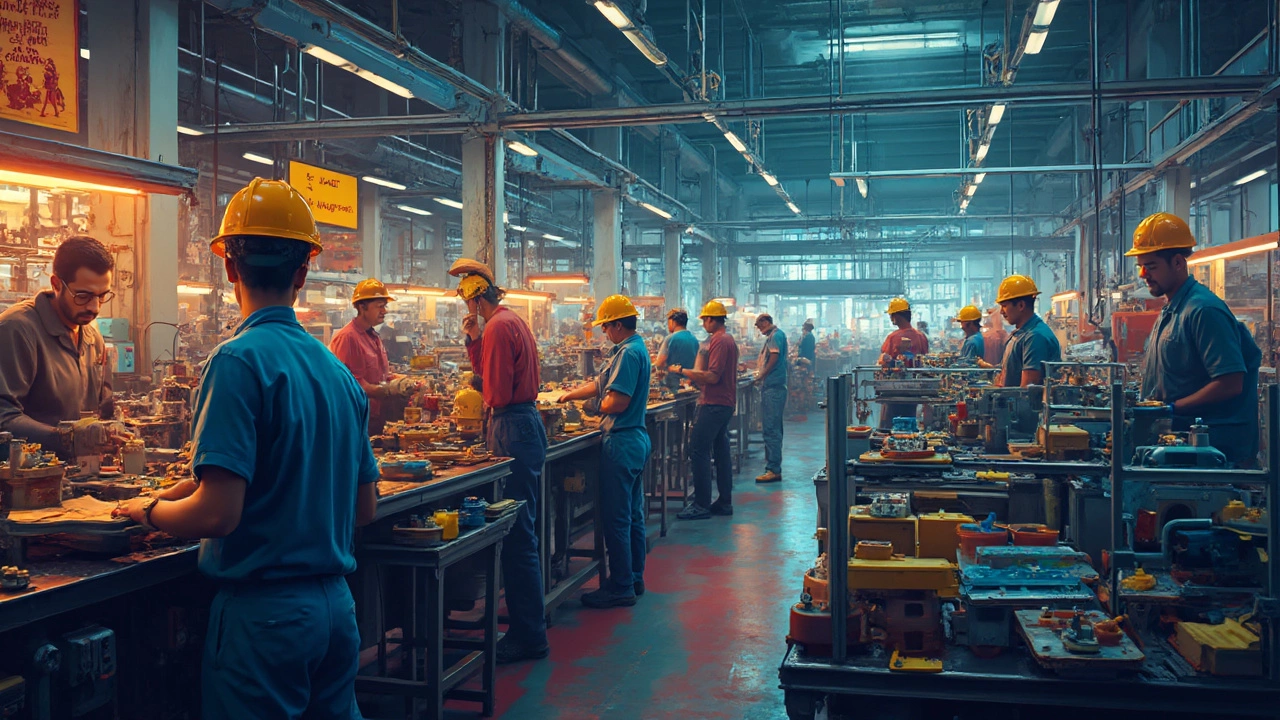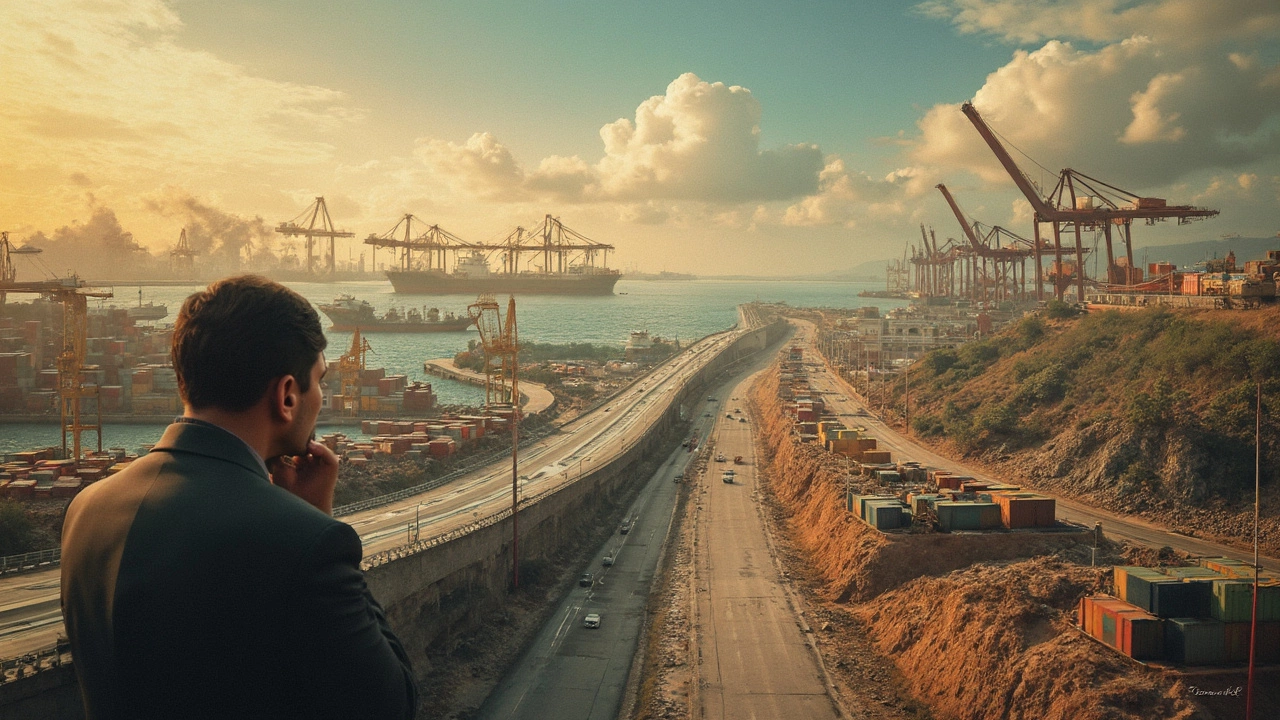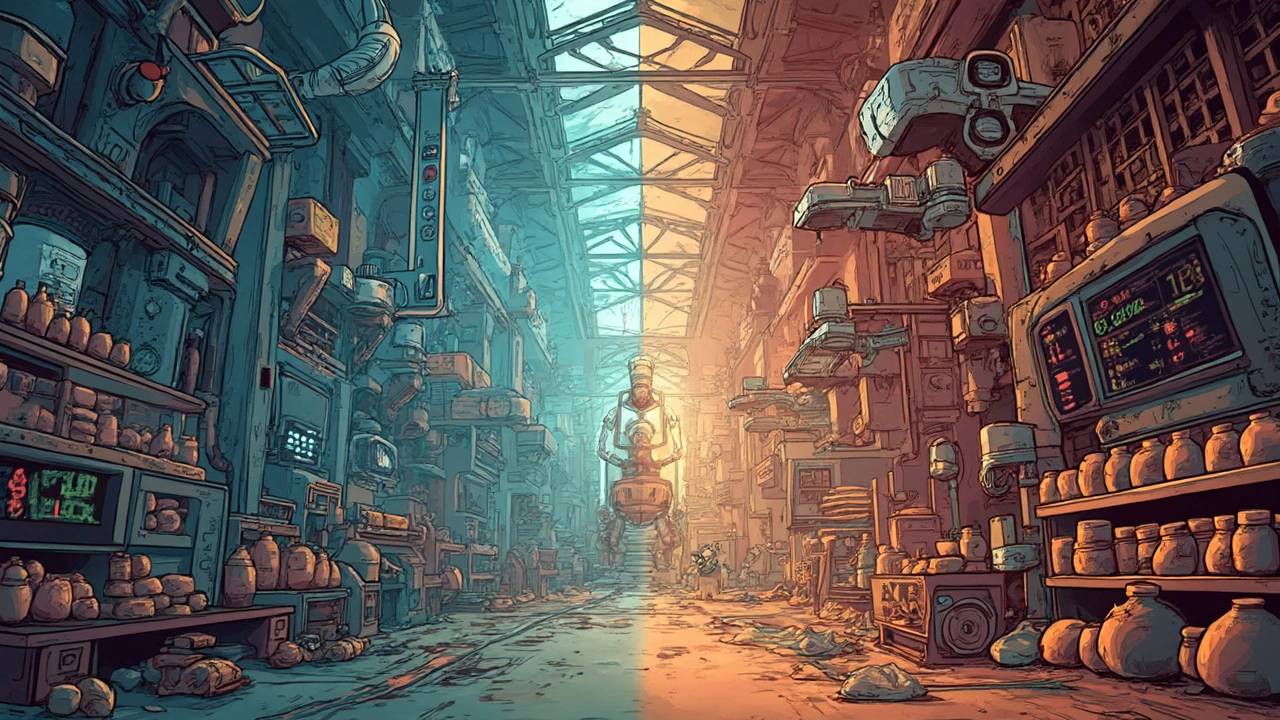Disadvantages of Manufacturing in Mexico: What You Need to Know

Thinking about starting a manufacturing venture in Mexico? You're not alone. Many entrepreneurs are drawn to the idea, thanks to the cost benefits and closeness to the U.S. But hold your horses! There are some snags you need to be aware of.
First off, let's talk about the economic challenges. Mexico's economy can be unpredictable. Inflation rates can swing, affecting everything from the cost of materials to the labor market. It's essential to keep a finger on the economic pulse to avoid any financial pitfalls.
Then there's the whole trade policy thing. With trade policies being as stable as a house of cards, especially with recent U.S.-Mexico relations, your manufacturing plans could hit a snag overnight. Imagine investing a chunk of cash only to see profits affected by a policy shift. That would be a game over.
- Economic Challenges
- Trade Policy Uncertainty
- Infrastructure Woes
- Labor Market Issues
- Industry Dependence
Economic Challenges
Ever think about how economic fluctuations can mess with your manufacturing in Mexico plans? Yup, it's a real deal. The Mexican economy isn't exactly a picture of stability, and this can be a wild ride for anyone looking to start a business there.
The Inflation Roller Coaster
Let's start with inflation. The rate isn't always on your side. After all, it has a tendency to swing. An unexpected rise can push up the cost of raw materials and production, squeezing your profits. Imagine planning your budget based on today's rates, only to have a sudden hike drive up expenses next month. It’s like trying to pin jello to the wall.
Currency Fluctuations
Next up, the Mexican peso. Don't underestimate the currency game here. If you're dealing with imports or exports, exchange rate fluctuations can impact prices significantly. The peso doesn't always play nice. It can lose value suddenly, making imported goods costlier and possibly affecting your pricing strategy.
Interest Rate Swerves
Then there's the cost of borrowing. Interest rates in Mexico aren't the most predictable. Want to expand your facilities or adjust your production line? Better hope rates stay low, or your borrowing costs might go through the roof, impacting growth plans.
| Year | Inflation Rate (%) | Interest Rate (%) |
|---|---|---|
| 2022 | 7.3 | 6.25 |
| 2023 | 6.0 | 6.0 |
| 2024 | 5.2 | 5.9 |
As you can see, these numbers don't always spell bad news, but they sure keep you on your toes. Keeping an eye on economic trends and having a flexible strategy to adapt are vital if you want to succeed with your production challenges in Mexico.
Trade Policy Uncertainty
When it comes to manufacturing in Mexico, one major stumbling block is the trade policy uncertainty between the U.S. and Mexico. As much as we'd love for everything to remain stable, politics has a funny way of keeping us on our toes.
The USMCA (United States-Mexico-Canada Agreement), which replaced NAFTA, aimed to modernize trade but left some businesses biting their nails. One of the more tense moments came when the Trump administration threatened tariffs on Mexican imports unless Mexican authorities curbed illegal immigration. This is just one example of how quickly policies can impact businesses reliant on cross-border trade.
Per the Wilson Center, "Trade tensions between the U.S. and Mexico could lead to increased costs of approximately 25% for certain industries, affecting competitiveness."
"The unpredictability in trade policies affects not only bilateral commerce but also the global supply chain reliance," said analyst Andrew Selee from the Migration Policy Institute.
Why It Matters
Setting up shop in Mexico means constant vigilance over trade dynamics. A little shift in tariffs or regulations can knock off your pricing advantage entirely.
How to Navigate the Waters
- Stay Informed: Regularly follow updates from credible trade analysts and organizations.
- Have a Plan B: Develop strategies that account for potential trade barriers, like alternative sourcing or production locations.
- Engage with Trade Experts: Legal experts in trade can offer guidance on mitigating risks associated with trade policy fluctuations.
Despite the challenges, manufacturers willing to adapt can still find great opportunities south of the border. It's all about staying ahead of the policy game.

Infrastructure Woes
When we talk about manufacturing in Mexico, one can't ignore the infrastructure hurdles that can trip up even the most well-planned business ventures. Sure, Mexico has some well-connected regions, but not all areas are created equal when it comes to transport and technology.
Let's break it down. While major cities like Mexico City and Monterrey have relatively good infrastructure, many rural manufacturing sites can suffer from unreliable roads and limited public transport. This can make getting materials to your factory and goods out to customers a bit of a nightmare.
Transport Network Challenges
The transport network in Mexico varies significantly by region. Urban areas generally boast modern highways and railways, but more rural locales might have you navigating dirt roads. Proper planning involves identifying transport corridors and ensuring they align with your logistics needs. Trust me; this isn't something you want to overlook.
Energy and Utilities
Another thing to chew on is the energy supply. Some regions face issues with power outages or inconsistent supply. If your manufacturing relies on steady energy inputs, an unstable electricity grid can really throw a wrench in the works.
Telecommunications and Internet
And let's not forget about telecommunications. High-speed internet remains a luxury in some parts of Mexico, which might affect everything from your day-to-day communications to advanced operational systems.
Finally, consider the impact of these infrastructure challenges on your bottom line. You might find yourself spending extra on logistics, so make sure you factor these costs into your business plan. Balancing these challenges can help you decide whether manufacturing in Mexico is the right move for you.
Labor Market Issues
Alright, let's dive into the whole labor market scene in Mexico for manufacturing startups. It looks pretty good from afar, with lower wages and a decent pool of workers. But once you're in, you might hit a few speed bumps.
Firstly, while the wages are generally lower than in places like the U.S., the cost isn't completely stable. Recently, the Mexican government has been raising the minimum wage. That's great for workers but not so much for companies watching their budget closely. It's a balancing act—keeping workers happy without breaking the bank.
A Skilled Labor Conundrum
You’re also going to need skilled labor for higher-end production, which can be a bit tricky to find. Sure, there's a sizable workforce, but those with the specialized skills might not be as abundant as you'd hope. You could end up spending extra on training or dealing with higher turnover rates as skilled workers jump ship for better pay.
Education and Training Gaps
Education levels in some regions may not be up to par with the requirements of modern manufacturing, leading to a gap between available skills and what's needed for complicated processes. Investing in training might solve the problem, but it’s also an added cost to consider.
Plus, let's not forget about the regional differences. Some areas have a robust labor market to tap into, while others are a bit of a struggle. You might need to look at different regions to find the right fit for your production needs.
It's all about weighing the pros and cons of the workforce situation. If you're prepared to tackle these issues, manufacturing in Mexico can still be a great choice. Just be ready to adjust to the evolving labor landscape.

Industry Dependence
If you're considering manufacturing in Mexico, it's crucial to understand how much your business might rely on local industries. Mexico's manufacturing scene is heavily tied to a few key sectors. Auto manufacturing is one of the biggest players. In fact, Mexico is one of the top auto producers globally. That's a double-edged sword, though. While you might benefit from a well-established supply chain, you could also sink if the auto industry takes a hit.
Another major sector is electronics, but like the auto industry, it shares its ups and downs based on global demand and trade issues. If your product isn't part of these two giants, you might find it a bit tricky to get the specialized support or parts needed. The country's dependence on big industries can limit diversity and flexibility. Treasury reports have noted that over 70% of Mexico's exports are from these concentrated sectors.
Supply Chain Considerations
Diversification in a supply chain is important. Relying too much on one industry can mean any policy change, strike, or natural disruption could impact your operations. Let's face it—playing it safe means spreading out your sources.
Are there benefits? Sure, specialized labor pools and infrastructure tailored for the auto and electronics markets can be a plus, but the fact remains: dependency can be risky.
It's wise to research the industry's health and future prospects before jumping in. Keep your eyes peeled for emerging sectors and synergies that could offer more stability and growth potential.





